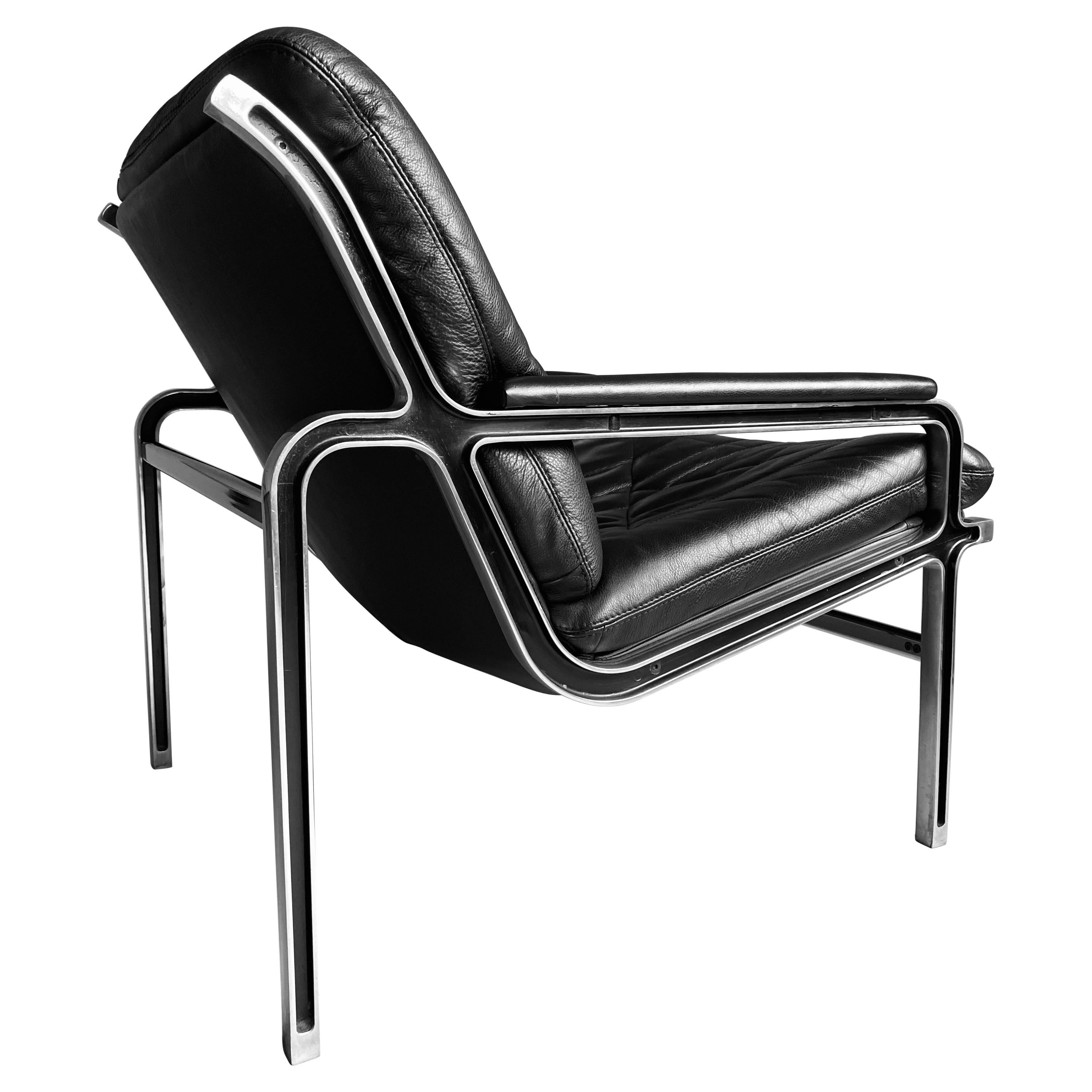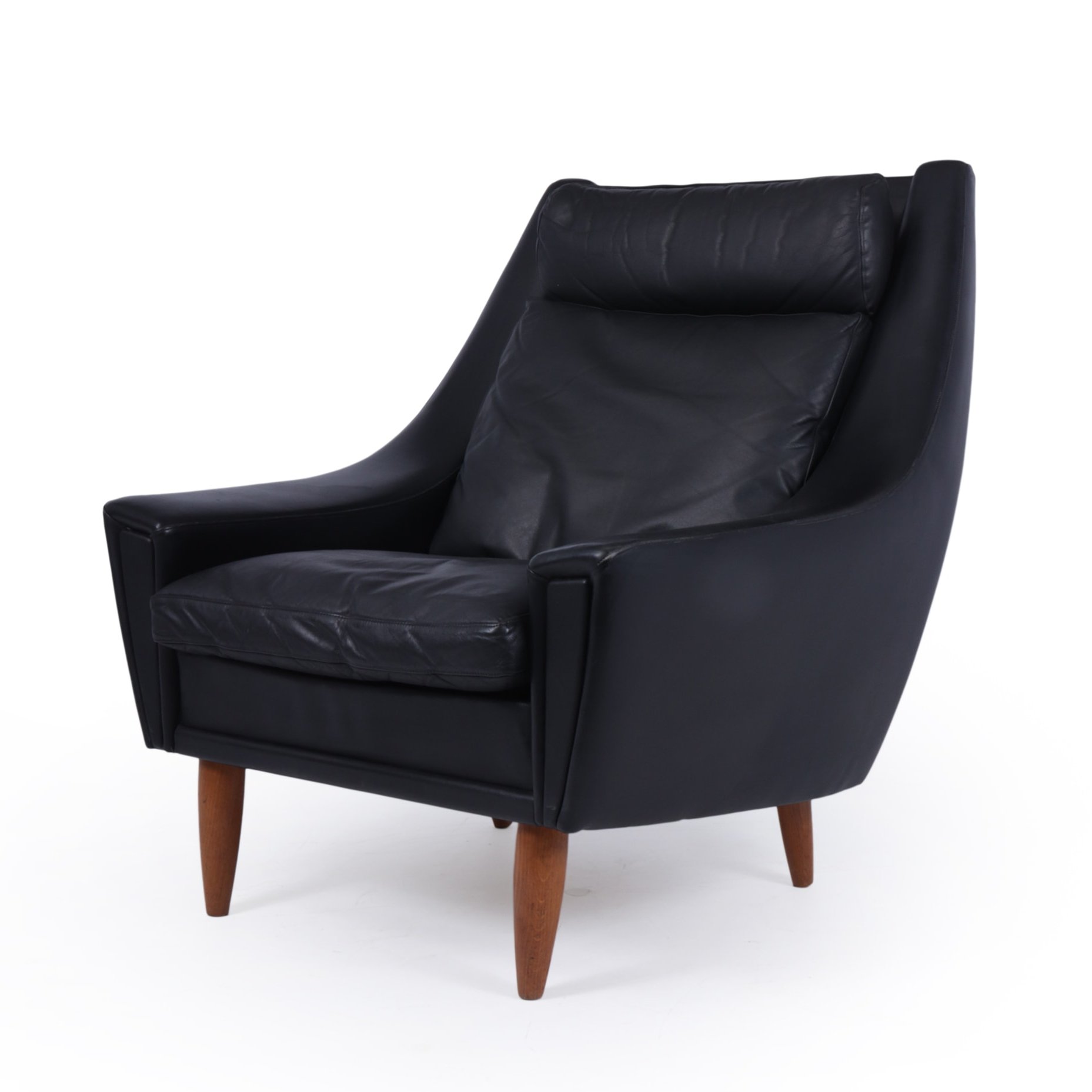Design & Aesthetics of Black Leather Mid-Century Modern Chairs: Black Leather Mid Century Modern Chair

Black leather mid-century modern chairs represent a compelling fusion of form and function, embodying the era’s emphasis on clean lines, organic shapes, and high-quality materials. Their enduring appeal stems from a sophisticated blend of minimalist design and luxurious tactile experience. This discussion will explore the key design elements and aesthetic variations within this iconic furniture category.
Typical Design Features of Black Leather Mid-Century Modern Chairs, Black leather mid century modern chair
The typical black leather mid-century modern chair is characterized by its streamlined silhouette and the strategic use of contrasting materials. Common design features include tapered legs, often made of wood (such as walnut or teak) or metal, providing a visual counterpoint to the soft curves of the leather seating. Seat shapes range from gently sculpted curves to more structured, rectangular forms. Backrests frequently feature a low profile, sometimes with subtle curves or integrated headrests, reflecting the emphasis on ergonomic comfort and visual simplicity. The leather itself, typically in a rich black hue, adds a sense of sophistication and timeless elegance. The interplay between the smooth, cool texture of the wood or metal and the warm, supple feel of the leather contributes significantly to the chair’s overall tactile appeal and aesthetic impact.
Aesthetic Differences Across Decades
The aesthetic of black leather mid-century modern chairs evolved subtly throughout the 1950s and 1960s, reflecting broader design trends.
| Decade | Leg Style | Seat Shape | Back Design |
|---|---|---|---|
| 1950s | Often tapered wooden legs, sometimes splayed for added stability; occasionally, slender metal legs. | Generally more rounded and organic, often featuring a gently curved seat cushion. | Low profile, often slightly curved or featuring a subtle inward slope. Simple, clean lines were emphasized. |
| 1960s | More variation in leg styles emerged, including slim, angled metal legs and more sculptural wooden legs. | A wider range of shapes appeared, including more angular and geometric forms alongside the continuing popularity of curved designs. | Some designs incorporated higher backs or integrated headrests, reflecting a shift towards increased comfort and support. Geometric influences became more apparent. |
Impact of Black Leather on Overall Aesthetics
The use of black leather significantly elevates the perceived style and luxury of a mid-century modern chair. Black leather’s inherent sophistication adds a layer of timeless elegance and understated glamour. Its rich texture and visual weight create a sense of solidity and quality, enhancing the chair’s presence in a room. The contrast between the dark leather and lighter wood or metal legs creates a visually striking effect, further emphasizing the chair’s clean lines and sophisticated design.
For example, consider a chair with a sculpted, curved seat and back upholstered in smooth black leather, supported by four slender, tapered walnut legs. The black leather’s matte finish subtly contrasts with the warm, polished sheen of the wood, resulting in a visually harmonious yet striking piece that exudes both comfort and understated luxury. The chair’s overall impact is one of refined elegance and quiet sophistication, a testament to the enduring power of classic design principles.
Materials & Manufacturing of Black Leather Mid-Century Modern Chairs

The production of black leather mid-century modern chairs involved a careful selection of high-quality materials and meticulous craftsmanship. The enduring appeal of these iconic pieces stems from a harmonious blend of form and function, achieved through a precise manufacturing process. Understanding the materials and techniques employed reveals the dedication to quality that defined mid-century modern design.
Black leather mid century modern chair – The choice of leather and wood significantly impacts the chair’s durability, aesthetic appeal, and overall comfort. The manufacturing process itself, from initial design to final assembly, showcases the skill and artistry of the artisans involved.
Leather Types Used in Mid-Century Modern Chair Production
Several types of leather were commonly utilized in the production of mid-century modern chairs, each offering a unique combination of durability, texture, and visual appeal. The selection depended on factors such as budget, desired aesthetic, and intended use.
- Full-grain leather: This is the highest quality leather, retaining the natural grain and texture of the hide. It is extremely durable, develops a rich patina over time, and offers a luxurious appearance. However, it is also the most expensive option.
- Top-grain leather: This leather has the top layer of the hide sanded to remove imperfections, resulting in a smoother surface. While still durable, it lacks the unique character of full-grain leather and is less resistant to scratches and wear. It represents a more affordable alternative.
- Genuine leather: This term often refers to leather made from the lower layers of the hide, which are split and then treated. It is less durable than full-grain or top-grain leather and may be more susceptible to cracking or tearing. It is the least expensive option.
Manufacturing Processes
The creation of a mid-century modern leather chair involved a complex series of steps, each demanding precision and skill. The process typically began with the selection of high-quality materials, followed by meticulous cutting, shaping, and assembly. The skilled craftsmanship involved ensured both the chair’s structural integrity and its aesthetic appeal.
The process generally included: pattern making, leather cutting, leather preparation (including dyeing and finishing), frame construction, upholstery preparation, upholstery attachment, final assembly, and quality control. Each step required specialized tools and expertise. For instance, the precise cutting of leather required experienced artisans to avoid waste and ensure accurate fitting. The upholstery process, involving careful stretching and tacking of the leather onto the frame, demanded both skill and patience to achieve a smooth, taut finish.
Common Wood Types Used in Chair Frames
The selection of wood for the chair frames significantly influenced the chair’s structural integrity, aesthetic, and overall cost. Different wood types offered varying levels of durability, workability, and visual appeal. The choice often reflected design preferences and the intended market.
| Wood Type | Characteristics | Durability | Common Usage |
|---|---|---|---|
| Teak | Strong, durable, water-resistant, rich golden brown color | High | Legs, frame supports |
| Walnut | Rich, dark brown color, strong, relatively easy to work with | High | Frame, legs, armrests |
| Mahogany | Hard, durable, reddish-brown color, beautiful grain | High | Frame, legs, armrests |
| Birch | Light-colored, relatively hard, strong, good for bending | Medium | Frame components, less visible parts |
